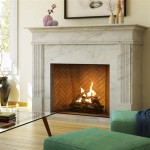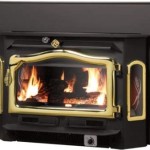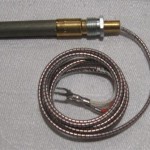DIY How To Make a Fireplace Mantel
A fireplace mantel serves as a focal point in any room, adding character and architectural interest. While pre-fabricated mantels are readily available, constructing a custom mantel offers the opportunity to tailor the design to specific aesthetic preferences and spatial requirements. This article provides a detailed guide to building a fireplace mantel, covering material selection, construction techniques, and installation procedures.
Planning and Design
Before commencing construction, careful planning and design are crucial. This phase involves considering the overall style of the room, desired mantel dimensions, and appropriate materials. The design should adhere to any applicable building codes and safety regulations, particularly regarding clearances from the fireplace opening.
The first step in the planning phase is to measure the available space. Accurately measure the width of the fireplace, the height to the ceiling, and the desired depth of the mantel. These measurements will dictate the overall dimensions of the mantel structure.
Next, consider the desired style. Mantels can range from simple, minimalist designs to elaborate, ornate structures. Research different styles and select one that complements the existing décor. Sketching a preliminary design is helpful in visualizing the final product.
Material selection is another important aspect of the planning phase. Common materials for mantels include wood, stone, and composite materials. Wood offers versatility and ease of construction, while stone provides a more traditional and robust aesthetic. Composite materials offer a balance of durability and affordability. The choice of material should be based on the desired look, budget, and skill level.
Finally, confirm that the design complies with local building codes. Most codes specify minimum clearances between the mantel and the fireplace opening, ensuring safety and preventing fire hazards. Consult with a local building inspector or review relevant building codes to ensure compliance.
Material Selection and Preparation
The selection of appropriate materials is essential for the structural integrity and aesthetic appeal of the fireplace mantel. This section details common material options and provides guidance on preparing the chosen materials for construction.
Wood is a popular choice for mantels due to its versatility and ease of workability. Softwoods like pine and fir are cost-effective options, while hardwoods like oak, maple, and cherry offer greater durability and a more refined appearance. When selecting wood, ensure it is properly dried and free from knots, cracks, or warping. The moisture content of the wood should be appropriate for the local climate to prevent shrinkage or expansion after installation.
Stone, such as marble, granite, or limestone, provides a classic and elegant look. However, working with stone requires specialized tools and skills. Stone mantels are typically more expensive and require professional installation. If considering stone, consult with a stonemason to determine the best type of stone for the project and to obtain accurate cost estimates.
Composite materials, such as medium-density fiberboard (MDF) or polyurethane, offer a cost-effective alternative to wood or stone. MDF is easy to cut and shape, making it suitable for intricate designs. Polyurethane is lightweight and resistant to moisture, making it a good option for areas prone to dampness. When using composite materials, ensure they are compatible with the intended finish, such as paint or stain.
Once the materials have been selected, they must be properly prepared. For wood, this involves cutting the lumber to the required dimensions using a saw. Accurate measurements and precise cuts are essential for a professional-looking mantel. Sand the wood surfaces smooth to remove any imperfections and prepare them for finishing.
For stone, the preparation process typically involves cutting the stone to size and shaping it using specialized tools. This process is best left to experienced stonemasons. Composite materials can be cut to size using a saw, similar to wood. Ensure that the edges are clean and free from burrs before proceeding with assembly.
Mantel Construction Techniques
The construction of the fireplace mantel involves assembling the various components according to the design plan. This section provides detailed instructions on common construction techniques for building a sturdy and aesthetically pleasing mantel.
The first step in the construction process is to build the mantel frame. The frame provides the structural support for the mantel and determines its overall shape. The frame can be constructed from wood, metal, or a combination of both.
For a simple wooden frame, cut the lumber to the required dimensions and assemble it using screws, nails, or wood glue. Ensure that the frame is square and level. Reinforce the corners with corner braces or gussets to provide additional strength. For larger mantels, consider using a stud finder to locate wall studs and attach the frame directly to the studs for added stability.
Once the frame is assembled, attach the mantel facing. The facing is the decorative surface of the mantel and can be made from wood, stone, or composite materials. Attach the facing to the frame using screws, nails, or adhesive. Ensure that the facing is properly aligned and securely fastened to the frame.
For wood facing, consider using wood glue and clamps to ensure a tight bond. Fill any gaps or nail holes with wood filler and sand smooth before finishing. For stone facing, use a specialized adhesive designed for stone and follow the manufacturer's instructions carefully.
After the facing is attached, add any decorative elements, such as molding, trim, or corbels. These elements enhance the aesthetic appeal of the mantel and add visual interest. Attach the decorative elements using nails, screws, or adhesive. Ensure that the decorative elements are properly aligned and securely fastened to the mantel.
Finally, apply a finish to the mantel. The finish protects the mantel from moisture and wear and enhances its appearance. Common finishes include paint, stain, and varnish. Choose a finish that is appropriate for the material and the desired look. Follow the manufacturer's instructions carefully when applying the finish. Allow the finish to dry completely before installing the mantel.
Finishing and Installation
The final steps in creating a fireplace mantel involve applying the chosen finish and securely installing the mantel in its designated location. Proper finishing protects the mantel and enhances its aesthetic, while correct installation ensures safety and stability.
Before applying any finish, the mantel must be properly prepared. This involves sanding the surface smooth and removing any dust or debris. For wood mantels, use a fine-grit sandpaper to achieve a smooth finish. For stone mantels, clean the surface with a mild detergent and water to remove any dirt or grime.
When selecting a finish, consider the desired look and the material of the mantel. Paint provides a solid color and can be used on wood, MDF, or polyurethane mantels. Stain enhances the natural grain of the wood and can be used on wood mantels. Varnish provides a clear protective coating and can be used on wood or stone mantels.
Apply the finish according to the manufacturer's instructions. For paint, apply multiple thin coats, allowing each coat to dry completely before applying the next. For stain, apply the stain evenly and wipe off any excess with a clean cloth. For varnish, apply a thin coat and allow it to dry completely before sanding lightly and applying a second coat.
Once the finish is dry, the mantel can be installed. The installation process will vary depending on the design of the mantel and the type of fireplace. In general, the mantel should be securely attached to the wall using screws or bolts. Use a level to ensure that the mantel is straight and plumb.
For masonry fireplaces, the mantel can be attached directly to the brick or stone using masonry screws or anchors. For framed fireplaces, the mantel can be attached to the wall studs using wood screws. If necessary, use shims to level the mantel and fill any gaps with caulk.
Ensure that the mantel is installed according to local building codes and safety regulations. Maintain the required clearances between the mantel and the fireplace opening to prevent fire hazards. After the mantel is installed, inspect it carefully to ensure that it is secure and stable.

How To Make An Easy Diy Fireplace Mantel Sprucing Up Mamahood

How To Build A Fireplace Mantel Easy Diy Blossoming Life

Diy Fireplace Mantel Designatedspacedesign Com

Easy Diy Fireplace Mantel Tutorial Jessica Welling Interiors

Easy Fireplace Mantel Diy

Building An Easy Modern Fireplace Mantel Young House Love

How To Make A Diy Fireplace Mantel The Idea Room

Diy Wood Beam Mantel

Diy Fireplace Mantel And Surround Jenna Kate At Home

Diy Wood Mantel Simple To Make Artsy Rule
Related Posts








